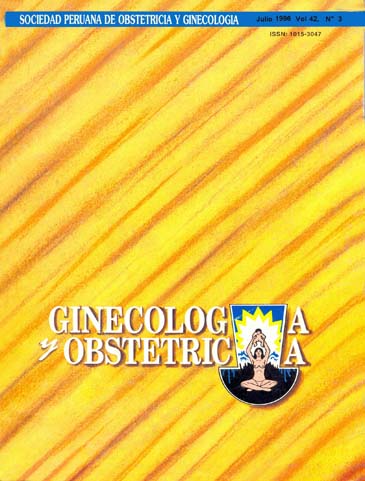Bacteriuria asintomática en una población de Lima: consecuencias maternas, fetales y neonatales.
DOI:
https://doi.org/10.31403/rpgo.v42i1804Abstract
OBJECTIVE: To determine the consequences of asymptomatic bacteriuria. MATERIAL AND METHODS: Prospective, comparative study of 3,602 pregnant women belonging to the Epidemiologic Surveillance Program of Glucose Intolerance in the Woman and Infant at San Bartolomé Hospital, Lima, from june 1990 through December 1994. RESULTS: 720 (20%) presented significant bacteriuria. From other 1.432 selected pregnant females without urinary symptom and with prenatal control, 304 (21,1) presented aymptomatic bacteriuria. Compared with the general pregnant population, asyimptomatic bacteriuria was three times more frequent inpregnant women that had of urinary tract infection before current gestation. Compared with non bacteriuric pregnant females, those with bacteriuria presented significant ferropenic anemia, arterial hipertension, premature rupture ofmembranes, pretem delivery, perineal condiloma perineal, bacterial vaginosis, short cord and placenta previa, as cause of cesarean section. Children of bacteriuric pregnant women had significant less risk of neonatal infection, muguet and congenital malformations. No significant difference in low Apgar at birth, neonatal sepsis or neonatal death was found, probably because of timely medical intervention. We found bacteriura recurrence following treatment in 55 cases (18%). CONCLUSION: Early detection and timely treatment for asymptomatic bacteriuria during pregnancy must be a norm of prenatal care in every pregnant woman in Lima.Downloads
Download data is not yet available.
Downloads
Published
2015-08-04
How to Cite
Pacora, P., & Huiza, L. (2015). Bacteriuria asintomática en una población de Lima: consecuencias maternas, fetales y neonatales. The Peruvian Journal of Gynecology and Obstetrics, 42(3), 50–58. https://doi.org/10.31403/rpgo.v42i1804
Issue
Section
Artículos Originales
















